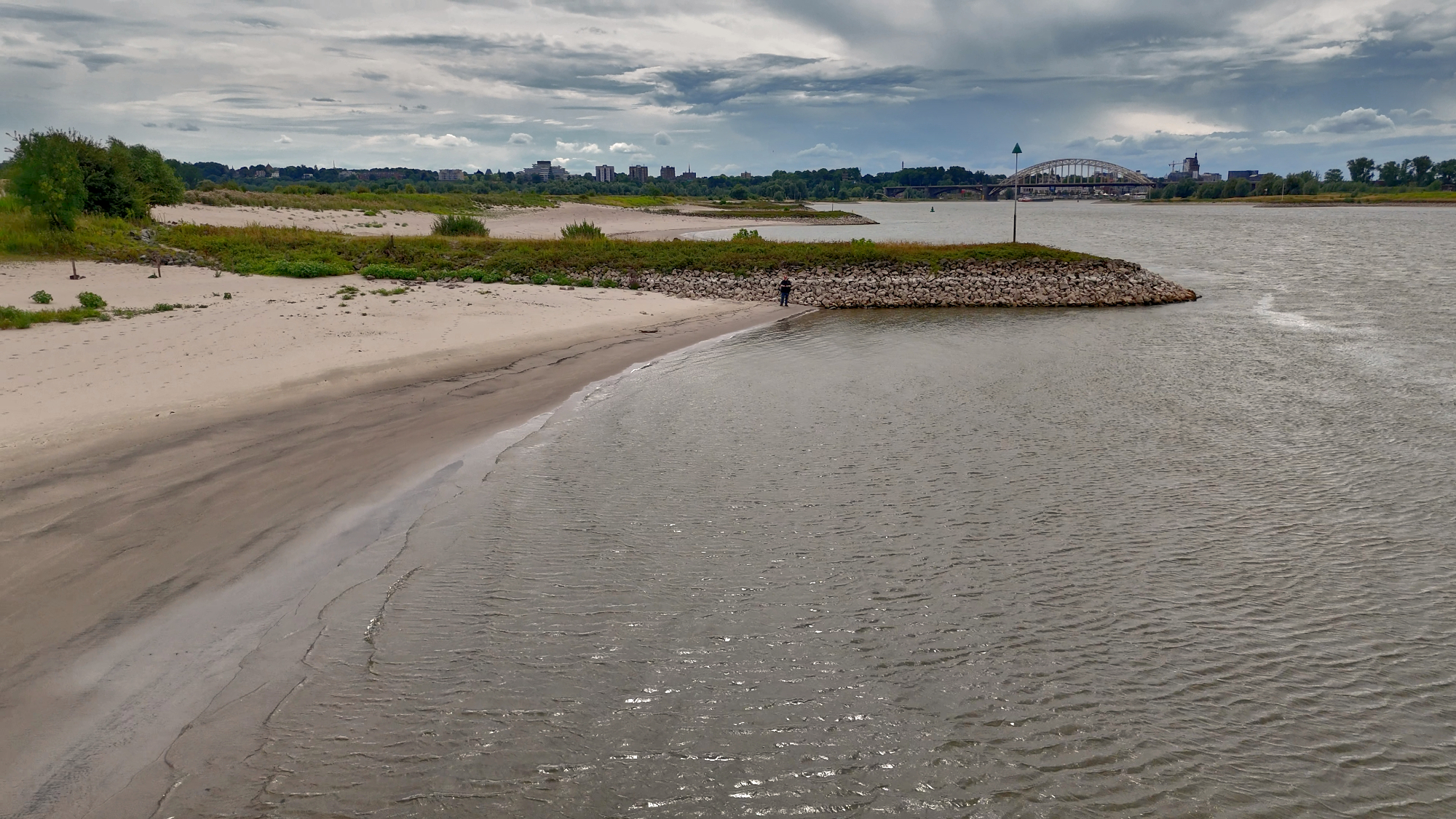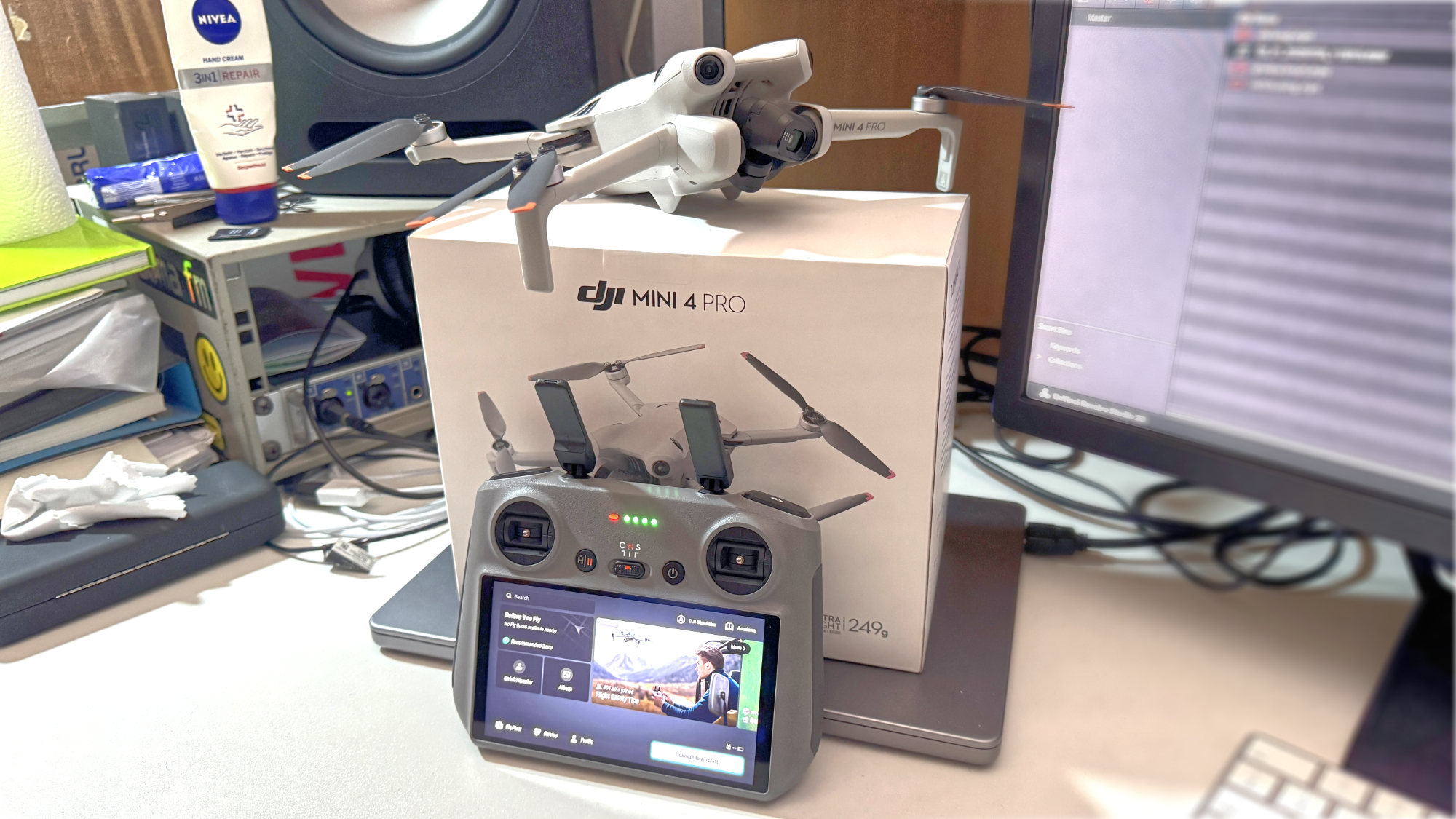Just finished unboxing my DJI Mini 4 Pro and immediately hit a wall—the firmware wouldn’t update. Despite having a strong Wi-Fi connection and no internet issues, I kept getting server errors that prevented the download. After half an hour of frustration, I found the solution.
The DJI Assistant 2 Solution
What finally worked was connecting the drone to my Mac with a USB cable and downloading DJI Assistant 2. This bypassed the server errors completely. Once connected, I could see my Mini 4 Pro was running version 0.100.0900, while version 1000 was available. The download started immediately and actually flew through—20% in seconds.
The whole process was surprisingly painless once I found the right method. Reddit came to the rescue here. While I didn’t check the official documentation, if you just follow the intuitive setup process, you’ll likely hit this same wall.
Updating the Remote Controller
With the drone updated, I moved on to the remote—the RC with the built-in screen. I was curious if DJI Assistant 2 would recognize it the same way. Sure enough, it showed up immediately. The firmware hadn’t been updated since September 2024, with three newer versions available, including one from May 2025.
Thankfully, I didn’t need to install updates sequentially—I could jump straight to the latest version. During the update, the remote made some strange white noise sounds, which was a bit disconcerting, but everything completed successfully.
The Complete Update Checklist
Here’s what I discovered needs updating before you can actually fly:
- Aircraft firmware
- Remote controller firmware
- DJI Fly app software
- Fly Safe database
That’s quite a workload before your first flight, but at least they’re keeping everything current.
From Phantom to Mini: My Drone Journey
This whole experience got me reflecting on my drone history. My first was a Phantom 3 Pro—over 3 kilos of flying hardware. Looking back, that thing was genuinely dangerous. This was during the “Wild West” days of drones, when you could pilot what was essentially a 3-kilogram weapon with zero experience. If that thing crashed on someone… well, let’s just say it wouldn’t end well.
Then came the Mavic Mini in 2020. What an improvement—small, light, already at that magic 249-gram weight that keeps you in the open category without additional licenses. But it was basic. No obstacle collision prevention, which always made me a bit jealous of later models. I kept thinking I’d bought too soon.
Why the Mini 4 Pro Now?
A few weeks ago, I decided to upgrade. I’m heading to Norway soon and wanted proper gear for capturing those mountains and landscapes. I splurged on the best available option. Sure, the Mini 5 Pro will probably release next month—that’s my luck with tech purchases—but after reviewing the feature set, the Mini 4 Pro ticks every box on my wishlist.
The reviews showing tracking failures and obstacle avoidance limitations in extreme conditions don’t worry me. It’s logical that low-res sensors struggle with thin branches or power lines. I’m not planning any extreme flying—just capturing beautiful footage in reasonable conditions.
First Impressions
The specs are impressive: 4K video with slow-motion capabilities, 48-megapixel photos, and that built-in screen remote I’d been wanting. No more phone tethering! With my previous drones, using your phone meant battery drain and awkward ergonomics. The Mavic Mini’s phone holder sat beneath the controller, forcing you to look down while flying—so awkward I bought a third-party mount to position it properly above.
This new remote feels much more solid, though still plastic. The screen is larger than my phone’s, and while I hadn’t tested brightness in direct sunlight yet, it looked promising.
Setting Up for Flight
After all the firmware updates, I downloaded offline maps for my area. This process revealed another quirk—you can only download small map sections (a few kilometers square), and the interface requires precise tapping on tiny icons. With larger fingers like mine, it’s unnecessarily frustrating.
I also bought the Fly More Combo with three batteries and some ND filters, though I’m skeptical I’ll need the filters—the exposure control seems good enough based on footage I’ve seen.
The Maiden Flight: Wind, Sand, and Surprises
Later that afternoon, I headed to a beach along the river outside town for the drone’s first real test. It was overcast and cloudy—but to my surprise, it was incredibly windy. So windy, in fact, that I got genuinely scared to put the Mini in the air.
I’d brought a landing pad because of all the sand, which proved both useful and problematic. After my first tentative flight, I powered down and waited for the wind to calm. Then a massive gust came out of nowhere, blowing over both the drone and the landing pad, smashing them onto the beach. The Mini 4 got sand on its sensors and sides—thankfully wet sand, which was stickier than loose sand that would have gotten everywhere.
Despite my nerves (the whole setup cost around 900 euros with the Fly More Combo and ND filters), I managed to test what I was most curious about: the tracking modes. I’m not particularly interested in high aerial shots—I want to use the drone for what you’d traditionally use dollies for. Walking down the beach with the drone tracking me from front, back, and side angles and the smooth position changes looked amazing on the remote’s screen. I can see a lot of potential for film making.
Learning Curves and Interface Quirks
The constant beeping from the remote was immediately stressful. Thankfully, I’d watched enough YouTube videos to know I could turn down the volume completely in the settings. That auditory warning might be useful for some, but it just makes me nervous—like when my car beeps while backing up, even though I’m in full control.
Speaking of the remote, its brightness in sunlight leaves something to be desired. Reading the pre-flight checklist in bright conditions was challenging, even with glasses. The interface can be confusing too—sometimes there are overlay messages you need to dismiss before accessing options underneath. Took me a while to figure that out, eventually pulling my shirt over my head to properly see the screen.
The icons are tiny—the active tracking button and takeoff button especially. At my age, even with glasses, it’s a struggle. The interface is busy with information everywhere, which takes some getting used to.
Performance in Challenging Conditions
Despite the harsh wind, the drone performed admirably. It dipped violently a couple of times when flying directly into the wind, which was disconcerting, but it held its position remarkably well. My old Mavic Mini would have been blown away in those conditions. Even the heavier Phantom 3 Pro, despite its more powerful motors needed to keep 3kg airborne, wouldn’t have inspired confidence in those gusts.
Landing took some reacquainting—I tried hand-catching once, but those plastic propellers still feel like they could break skin at speed. Managed one perfect landing and two decent ones.
One thing that threw me: I expected the controls to be reversed. My intuition says left stick for forward motion, right for altitude, but it’s the opposite. Not sure if that’s changeable in settings, but I’ll investigate.
Looking Ahead
For anyone setting up a new DJI drone and hitting firmware update issues, try the USB cable method with DJI Assistant 2. It may not be the most obvious solution, but once you know about it, the whole update process becomes smooth and relatively quick.
The new EU drone rules have made flying easier in some ways, though airports, trauma helicopter routes, and nature reserves still create narrow flight corridors in and around my city. It’s challenging to find new perspectives when you’re limited to the same strips of airspace.
I need more practice before Norway—hopefully the weather cooperates this week. But even from this nerve-wracking first flight, I can tell this is going to be a fun tool. The tracking features alone open up creative possibilities I’ve been wanting to explore. Now I just need to get my muscle memory back and stop expecting the controls to be reversed.
Time to clean off that sand and prepare for round two.

